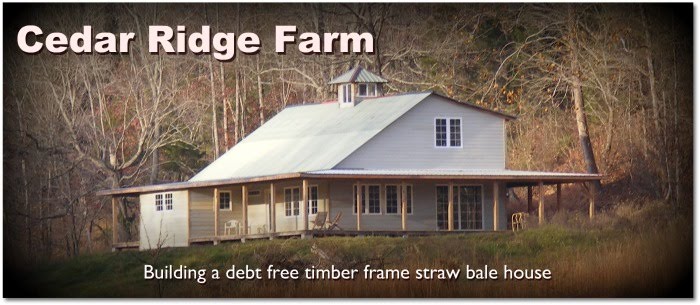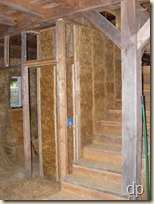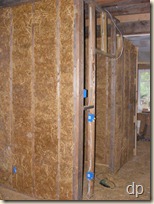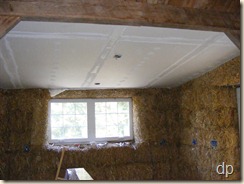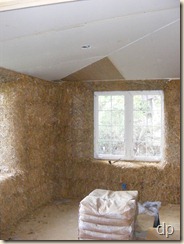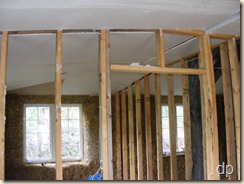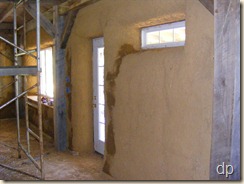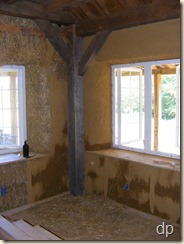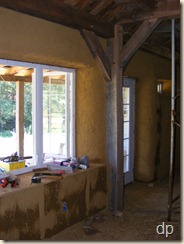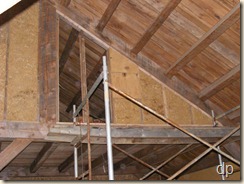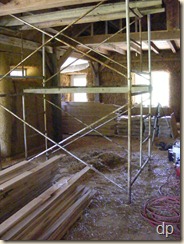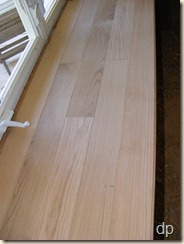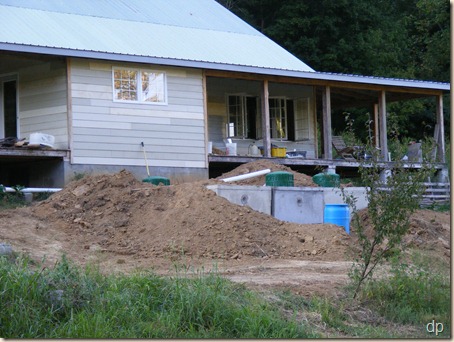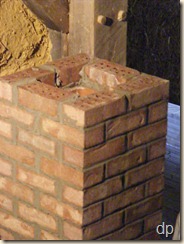 Yesterday, a good friend came over to help me begin building the chimney for the house. Previously, I poured a footer and built a block foundation for it, but I hadn’t started on the actual chimney yet. Although I’ve read a little about how to lay brick, I wasn’t quite sure about tackling the project by myself. So, I asked David if he would help since he has laid brick on many different jobs in the past. He was glad to assist.
Yesterday, a good friend came over to help me begin building the chimney for the house. Previously, I poured a footer and built a block foundation for it, but I hadn’t started on the actual chimney yet. Although I’ve read a little about how to lay brick, I wasn’t quite sure about tackling the project by myself. So, I asked David if he would help since he has laid brick on many different jobs in the past. He was glad to assist.
David showed me the basic technique, which for this job is not too difficult. I’ve laid a few concrete 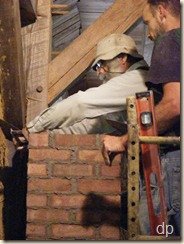 blocks with mortar in the past, and this brick work was easier, as far as I’m concerned. The biggest concern is keeping things level and plumb as it goes up. We used levels to check things on each course. My biggest concern is going straight up to the hole I have cut in the ceiling through which the chimney is supposed to go. We seem to be on line for that.
blocks with mortar in the past, and this brick work was easier, as far as I’m concerned. The biggest concern is keeping things level and plumb as it goes up. We used levels to check things on each course. My biggest concern is going straight up to the hole I have cut in the ceiling through which the chimney is supposed to go. We seem to be on line for that.
We put a clean out access door near the floor. I’m not sure how the door I bought for this purpose was intended to be attached, but we figured out how to get the job done.
The thimble for the stove pipe coming from the stove will be just above the narrow window which is on the wall that will be behind the stove. 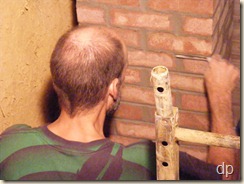 By the time we finished yesterday, we were at that level which is about seven feet off of the floor, having set the flue liner with the hole for the thimble.
By the time we finished yesterday, we were at that level which is about seven feet off of the floor, having set the flue liner with the hole for the thimble.
I’ll finish the chimney during the next couple of weeks, depending on the weather. It’s been kind of wet here for a few days which isn’t good for laying brick outside. I’ll need to push it through the roof next,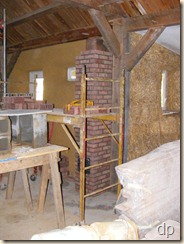 so I will be working on the outside. It’ll be interesting laying the bricks as the chimney goes through the ceiling and roof area, but I’ll manage.
so I will be working on the outside. It’ll be interesting laying the bricks as the chimney goes through the ceiling and roof area, but I’ll manage.
I’m happy with how it’s looking. I bought these bricks mainly because the brick place was selling them at clearance price, trying to sell their remaining stock. I ended up buying them for less than 15 cents apiece (less than half price). However, seeing them as they become a chimney, I like how they look really well. It’s going to be a nice looking chimney.
